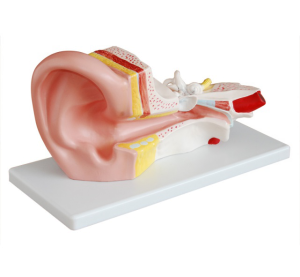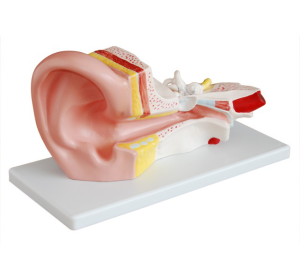Middle ear anatomical model has immeasurable value in clinical skills training, it is not only an important tool in medical education and training, but also a key means to improve the surgical skills and diagnostic accuracy of clinicians. Its value is elaborated in the following aspects:

First, provide intuitive learning materials
The middle ear anatomical model can reconstruct the complex structure of the middle ear, including tympanum, ossicular chain, eustachian tube and other key parts. This intuitive learning material enables medical students and clinicians to clearly observe the internal structure of the middle ear, thereby deepening their understanding and mastery of middle ear anatomy.
Second, promote the improvement of surgical skills
In clinical skills training, middle ear anatomical model provides a platform for doctors to simulate surgical operations. Doctors can perform repeated surgical exercises on the model, such as tympanoplasty, ossicular chain reconstruction, etc., so as to familiarize themselves with surgical steps, master surgical skills, and improve the accuracy and proficiency of surgical operations. This simulation training is helpful to reduce the errors and complications in the actual operation and improve the success rate of the operation.
Third, enhance diagnostic capabilities
Middle ear anatomical model can also be used to simulate the pathological changes of various middle ear diseases, such as otitis media, cholesteatoma, etc. By observing the lesions on the model, doctors can deepen their knowledge and understanding of the disease, thus improving the accuracy and timeliness of diagnosis. In addition, the model can also be used in teaching demonstrations to help medical students better grasp the diagnosis methods and skills of diseases.
4. Promote teamwork and communication
In clinical skills training, the use of the middle ear anatomical model often requires close collaboration and communication among team members. Doctors need to work with assistants, nurses and other personnel to operate the model, complete the surgical simulation or diagnostic simulation. This process of teamwork helps to enhance the tacit understanding and cooperation between doctors, improving the efficiency and quality of surgery or diagnosis.
5. Reduce training costs and risks
Compared with traditional training methods such as animal experiment or autopsy, middle ear anatomy model has the advantages of low cost and low risk. It can be used over and over again without worrying about bioethics and animal protection. At the same time, because the model itself is not living, it does not pose any harm or risk to doctors or patients.
To sum up, middle ear anatomical model is highly valuable in clinical skills training. It not only provides intuitive learning materials and a platform to simulate surgical procedures for medical students and clinicians, but also promotes the improvement of surgical skills, the enhancement of diagnostic ability, and the development of team collaboration and communication. With the continuous progress of medical technology and the increasing clinical demand, middle ear anatomical model will play a more important role in clinical skills training.

